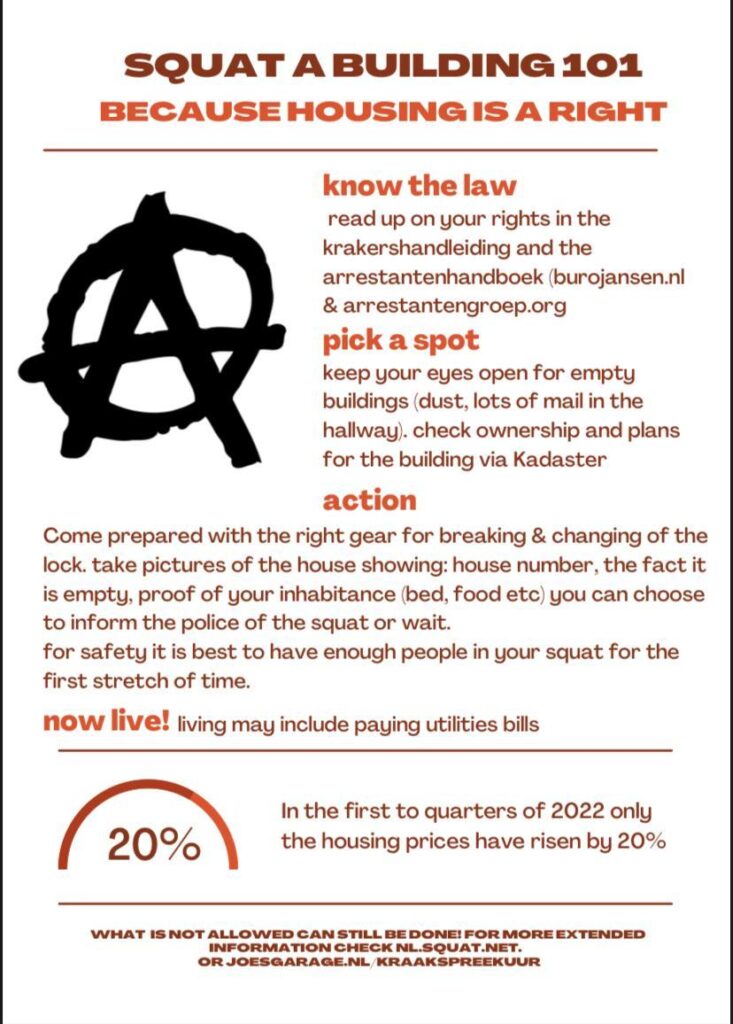
The forceful removal of people from the only housing they are able to afford is a consequence of the increased control over social spaces and policing of the lower classes.
We wanted to comment on the fact that squatting […] was made illegal due to the increased alienation and policing of the lower classes.
We created flyers explaining how to squat in a house. Our work was inspired by the theoretical framework of Edward Soja, especially his ideas on social segregation and the carceral cities of post-modern urbanization. Squatting is the act of inhabiting a building that has been abandoned, and in the Netherlands, it was a significant part of the anarchist social movement in the 1980s. It was criminalized in 2010 and has since diminished in use as a form of social protest, and hundreds of arrests and evictions have taken place in the past decade. The forceful removal of people from the only housing they are able to afford is a consequence of the increased control over social spaces and policing of the lower classes. Soja describes how the “new patterns of social fragmentation, segregation and polarization” create an increase in impoverishment, crime, and homelessness in direct relation to the increase in “economic and cultural inequality”. By handing out flyers instructing people on how to squat we wanted to comment on the fact that squatting, which has historically provided quick and easy housing for many unhoused people, was made illegal due to the increased alienation and policing of the lower classes in order to keep people unhoused and separated from the upper classes.